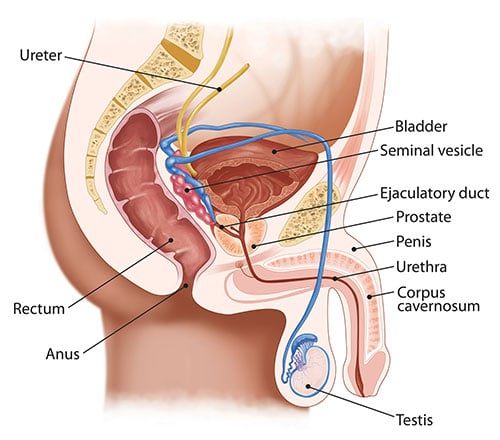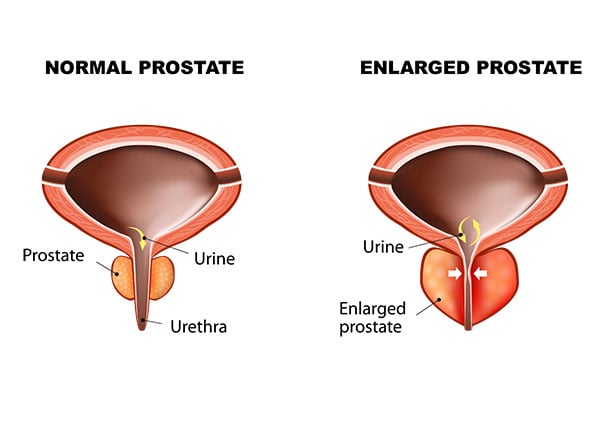
Prostate Artery Embolization /
Urinary Problems – old
A Breakthrough Procedure.
As men age, they often begin to experience urinary issues that can cause embarrassment, loss of sleep, and more. Prostate artery embolization (PAE) is a new treatment option for men with benign prostatic hypertrophy (BPH) – also known as an enlarged prostate gland – that often causes the urinary issues.
As you can see from this illustration, the prostate gland surrounds the urethra, the tube that carries urine from the bladder out of the body. As the prostate gets bigger, it may squeeze or partly block the urethra. This often causes problems with urinating.


Symptoms
An enlarged prostate often constricts the flow of urine. Nerves within the prostate and bladder may also play a role in causing the following common symptoms:
-
Urinary frequency
-
Urinary urgency
-
Frequent nighttime urination
-
Difficulty initiating the urinary stream
-
Weak stream
-
Incomplete bladder emptying
-
The need strain or push to initiate and maintain urination
-
Dribbling
Treatment
During the PAE procedure, Dr. Gropper inserts a tiny catheter into the femoral artery (NOT through the penis) and guides it to the prostate artery on both sides of the enlarged prostate gland. Once positioned next to the prostate, the catheter is used to deliver microscopic spheres to block blood flow, causing the prostate to shrink, and dramatically reducing symptoms.
The procedure is performed in-office, under mild sedation, if desired. There is no need for general anesthesia since the procedure is not considered painful.

